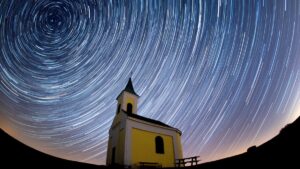Even licence applications are news in the so-hot-right-now Pilbara gold region

Pic: Tyler Stableford / Stone via Getty Images
The Pilbara is so hot right now even licence applications are noteworthy, with Southern Hemisphere Mining announcing the fact that it’s applied for two exploration permits.
They told investors it had applied for licences to look for conglomerate gold over a 782 sq km area at Newman, 400km south of the Pilbara capital Karratha.
Gold explorers — listed companies and prospectors alike — have been racing to the Pilbara region of north Western Australia in recent few months, following an outbreak of gold fever.
Investors have bought into a swathe of gold juniors — particularly those with Pilbara tenements prospective for conglomerate-hosted gold — in some cases before a hole has been drilled.
Southern Hemisphere Mining (ASX:SUH) operates on the southern edge of the Pilbara Basin, and the new licences add to its other 722 sq km worth of licence areas near Paraburdoo.
The tenements, which Southern says have no competing applications, are geologically associated with the Lower Fortescue Group on the southern boundary of the Fortescue Basin.
The Fortescue Group of volcanic rock formations are known to host gold mineralisation as well as copper, zinc and uranium.
Southern told investors the new landholdings are considered geologically similar to the Purdy Reward Project owned by Artemis Resources on the northern boundary of the Fortescue Basin.
Southern Hemisphere director Keith Coughlan says while everyone else is looking in other parts of the Fortescue Basin, he’s focused on the southern fringes.
“There is no reason why this exciting play does not exist in the southern part of the Basin, as there is extensive historic evidence of gold occurrences associated with the Lower Fortescue in this area.”
The company is working from historical sampling data from the Department of Mines, Industry, Regulation and Safety, and mapping from the Geological Survey of Western Australia which indicates the presence of Lower Fortescue Group sediments along the margins near historical gold occurrences at the Archean Sylvania Dome.
Southern Hermisphere’s shares jumped almost 6 per cent in morning trade to 19c, near the top of its 3c to 22c 52-week trading range.
UNLOCK INSIGHTS
Discover the untold stories of emerging ASX stocks.
Daily news and expert analysis, it's free to subscribe.
By proceeding, you confirm you understand that we handle personal information in accordance with our Privacy Policy.








